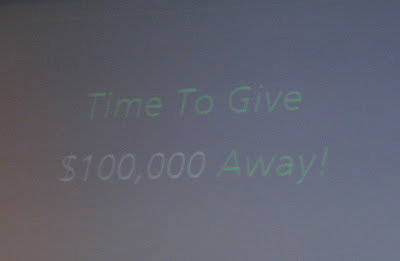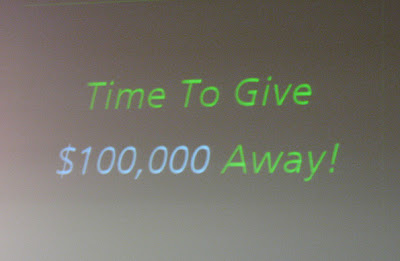
Winter can be one of the best times to shoot outdoors, and the key to a successful shoot is being properly prepared. Here’s what you need to know.
ClothingThe key here is to dress in layers, wearing fabrics that will wick moisture away from the body (simply put, no cotton). The concept of layering is that you can dress on the light side when you are exerting your hiking into a location and raising your temperature, but have more layers to add once you are just standing around waiting for the perfect light.
I generally start with a polypro turtleneck, a fleece vest or jacket on top of that, then a water and windproof shell as the outer layer. Bottoms are again layered, first with polypro tights, then fleece, then a pair of waterproof pants. Venting zippers on the jacket and pants are valuable for regulating body temperature, Hats are an important defense against losing body heat, and I have a range of hats and headbands available for different weather conditions, including a down face mask for the extreme situations.
Interestingly, I’ve found the key to staying warm is to make sure my feet stay warm. Depending on the temperature and depth of snow, I would at least wear a pair of waterproof hiking shoes with wool or fleece socks. When it gets colder, I’ll move to boots that have wool or synthetic liners. And on really cold days, I’ll go to “Mickey Mouse” boots that have a layer of air between the footbed and the exterior . When the snow depth gets to be an issue, I’ll couple any of these boots with gaiters to keep the snow from getting in between the boots and pants.
Next is dealing with your hands, and again I suggest having multiple solutions. At a minimum, I’ll use a thin pair of polypro glove liners with sticky lines or dots to maintain good tactile ability. From there, I might layer a pair of fingerless fleece gloves on top of them. Next might be a waterproof shell if it is snowing. Another option would be fleece mittens with flaps that open back to fingerless gloves below.
The last two items that are critical for shooting in the snow are sunscreen and sunglasses. Snow will reflect the light back into your face, and it is easy to get sunburned in a short amount of time. But it’s not only your sking to be concerned about. Early on, I did an assignment for a ski resort, shooting most of the day facing into the sun while I skied backward capturing the action. The next day I could barely open my eyes. Now I shoot with glacier glasses, and as odd as it seems, it is well worth it for the protection they give.
EquipmentProbably the most important issue, especially now with digital cameras, is battery power. Cold weather saps the energy of batteries, so be sure to have backups with you. I generally keep these in pockets close to my body so they stay warm. Hand warmers, available at sporting goods stores, can be valuable here as well. If it is really cold, I may tuck my camera inside my coat to keep it warm as well.
Be prepared to protect your camera and accessories from weather. There are some great rain hoods and waterproof casings out there, but you can also use baggies to keep things dry. They’re also valuable in keeping condensation off your gear when you bring it inside. But keep in mind that condensation forms on the outer most layer, so if you have your equipment inside a camera bag or backpack, that would not be an issue.
A microfiber cleaning cloth or chamois is always good to have to keep things dry. And if it’s snowing, and I have the room, I’ll even carry a small umbrella so there is some distance between the lens and the first flakes of snow captured in the image.
One thought is to work with a waterproof camera in snowy situations. There are several point-and-shoot models out there, and they take the worry out of winter shooting as long as you are not planning on large blow ups from the images you create.
If you are shooting close to sunrise or sunset, you’ll probably want a tripod along with you. My recommendation would be to use one made of carbon fiber for two reasons. First, they are lighter, and equally important, do not suck the heat out of your hands when you are working with them.
. Finally, a good backpack is helpful for carrying your gear, extra clothing, water and snacks. A backpack cover gives even more protection in keeping things dry, so those are recommended as well.
So, now that we are ready, what are some of the tips for shooting in winter? Here are the three key things to remember.
Watch your exposureAll light meters give you an exposure that would place whatever is covered by it as 18% grey. If you were to shoot a white card and a black card, the exposure for each would be exactly the same--mid grey. Try it sometime. How does that affect our shooting in winter? If you shoot a scene that is a mix of sky, trees and snow, maybe not that much, since you have a combination of light and dark values. But if the scene is all snow, the exposure will be underexposed significantly. The solution is to use the exposure compensation feature of your camera. If you are shooting with film, you can start with a minus one stop setting and bracket a stop in each directon. If you are shooting with a digital camera, simply check your histogram to make sure the highlights don’t blow out. Experience will help guide you once your done this a bit.
Watch your timingBecause light bounces off snow, shadows fill in quickly. So if you are shooting mid-day, the light is going to look uninteresting. The best time to shoot a landscape would be early or late, when the light is low, and there are nice shadows to give the image contrast.
Another good time to shoot landscapes is before sunrise and after sunset, when the light wraps around objects without harsh shadows. You can even play with color to give the sense of coldness by using tungsten based film or adjusting your white balance (for digital cameras).
 Watch your light
Watch your lightIf you are shooting a landscape that includes snow, look for angles that will show the texture. Shooting so that the sun is coming in from one side of the frame or the other would help, as would shooting with backlighting.

And if you are shooting portraits, best to position them so they are backlit so that they will not have dark eye sockets.




































